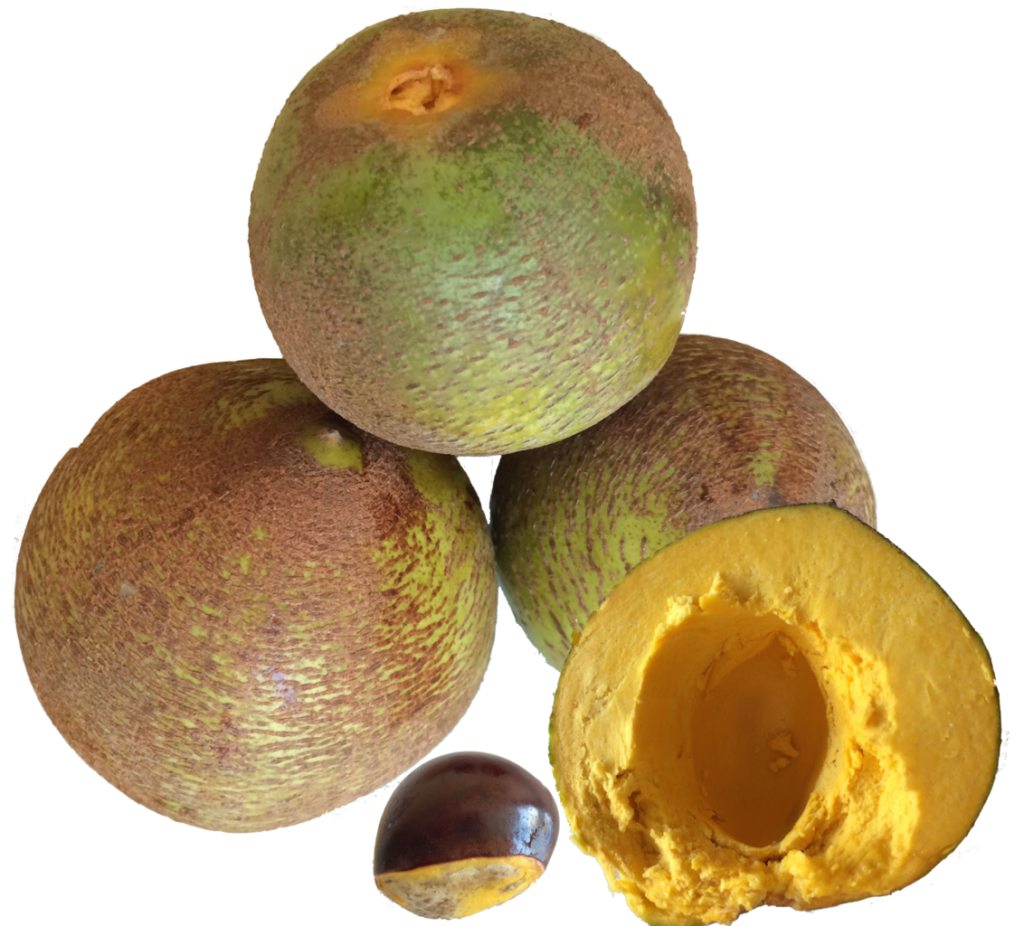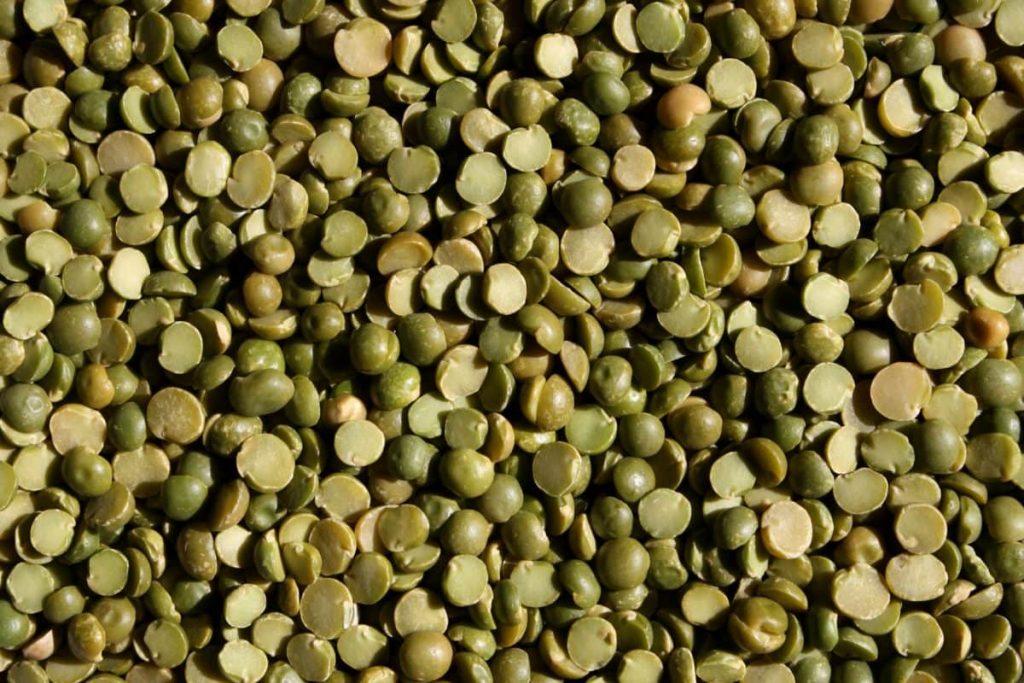[Article updated on 19/09/2023]
The benefits of fruits and vegetables are invaluable, and almost no one can deny it today. Scientists have long proven that their daily consumption (preferably raw) helps to strengthen the immune system, improve the functioning of the heart and blood vessels, and saturate the body with vitamins and minerals. Here is the list of vegetables and fruits starting with L.
Lucuma
Lucuma (Pouteria lucuma ) is the fruit of a tree native to the Peruvian Andes. It is also cultivated in Chile and Ecuador and belongs to the Sapotaceae family. The very intense flavor is a cross between maple syrup and sweet potato. The consistency, for its part, varies depending on the degree of maturity of the fruit.

Lucuma has a thin, green skin when unripe. When ripe, it turns a brownish color. The pulp, dry, floury and similar to egg yolk, then takes on an orange-yellow color. From the dried fruit of the lucuma we obtain a powder used in cooking as a sweetener. Its pulp, in addition to being very good, also presents a series of considerable health benefits.
This pulp is rich in beta-carotene, vitamin A, vitamin B2, mineral salts and iron. They make it a special fruit, even a real superfood, with antioxidant and highly nourishing power. Lucuma also contains carbohydrates, fats and a substance called niacin which serves to regulate blood cholesterol levels.
Longan
Longan is the fruit of Dimocarpus longan, a tropical fruit tree belonging to the Sapindaceae family. Originally from southern China, this fruit called “dragon’s eye” is also present in Indonesia and Southeast Asia. Longan can be considered more or less a minor cousin of lychees and rambutans. This fruit is very popular in Asia, where it is used in many recipes and preparations.
Longan pulp contains many nutritional and functional components, including carbohydrates, proteins, fiber, fats, vitamin C, amino acids, minerals, polyphenols and volatile compounds.
Once peeled, longan can be eaten fresh or dried. The fresh fruit is also used to create soups, sweet and sour sauces, jams, ice creams, juices and spirits. Dried, on the other hand, it has a similar appeal to raisins. For centuries, longan has been used in traditional Chinese medicine as a sleep aid and relaxer, to improve digestion and immunity, relieve nerve pain, reduce fever, kill parasites, and even as an antidote to snake venom.
Litchi
The lychee or Chinese cherry is the fruit of Litchi chinensis, a plant belonging to the Sapindaceae family. Lychee is a small tropical fruit characterized by a wrinkled, red-pink, inedible skin surrounding a whitish pulp. Lychee has a sweet, floral flavor. Lychee can be used to make creams, jams, ice creams or sorbets, but it is mainly consumed fresh. Simply peel the fruit completely and consume the juicy pulp, paying attention to the seed. Lychees are a valuable source of vitamin C.
100 grams of lychees contain 71.5 mg. They contain a lot of potassium (171 mg per 100 g of fruit). Lychees are also rich in protein, carbohydrates, fiber, sugars, vitamins (B1, B2, B3, B6 and B9, E and K), minerals (zinc, phosphorus, magnesium, manganese, selenium, sodium, calcium and iron). Eastern alternative medicine considers lychee to be a good medicine for diseases of the respiratory tract.
Lime
Lime, also called lime, is the fruit of Citrus aurantiifolia, a citrus fruit belonging to the botanical family Rutaceae. These fruits are almost spherical in shape, green or yellow in color. The taste of lime is tangy and it gives off a fresh and pleasant scent. The pulp has no seeds and is very juicy, while the skin is particularly thin. In cooking, lime is often used as an alternative to lemon, for the preparation of starters and main dishes. Lime is also useful in preparing cocktails such as caipirinha, caipiroska, margarita and mojito.
With only 38 kcal/100g, lime is an excellent ally in low-calorie diets. It has a good fiber content and is also very rich in water. Like other citrus fruits, lime has a high vitamin C content, although lower than that of lemon. However, it has twice as much vitamin A as the latter and also contains vitamin E. Lime is very rich in potassium, calcium and phosphorus.
The cosmetic industry uses a lot of lime essential oil, obtained from its peel. This ingredient is used in the preparation of creams, perfumes and soaps. In addition, its aroma is a good natural remedy against mosquitoes.
Lens
The lentil is a seed vegetable. It is harvested from Lens culinaris, an annual plant of the legume family. The plant owes its name to the characteristic shape of its seeds. There are three types of lentils: red, brown and green. All three species have the same nutritional value and differ in color and cooking time. Lentils can be eaten sprouted, fried, baked or boiled. They are certainly delicious with chorizo, blood sausage, pork ears or bacon.

Due to their high nutritional value and low caloric value, lentils are an excellent dietary supplement. One teaspoon of grains of this vegetable contains only 14 calories. Grains are rich in easily digestible protein, which makes the body feel full for a long time. It contains vitamins B1 and B9, a lot of magnesium, iron, phosphorus, manganese, zinc and potassium. Lentils are also rich in plant fiber.
Lettuce
Lettuce is a leafy vegetable. It is picked from lettuce (Lactuca sativa), an annual dicotyledonous herb of the Asteraceae family, whose leaves and heads are used for food. The leaves form a basal rosette which generally does not exceed 30 centimeters in height. They are usually green in color, but can be brown or reddish depending on the variety.
Lettuce is one of the oldest crops. There are several varieties of lettuce (Batavia lettuce, Iceberg lettuce, leaf lettuce, romaine lettuce, etc.). Most lettuces are used in salads, alone or with other greens, meats and cheeses. Lettuce leaves can also be used in soups, sandwiches and wraps, while the stems are eaten both raw and cooked.
Lettuce contains potassium, phosphorus, calcium and magnesium, vitamin C, carotene (provitamin A), vitamins E, B1, B2, B6 and niacin. The outer leaves of lettuce contain twice as much vitamin C as the inner leaves.
